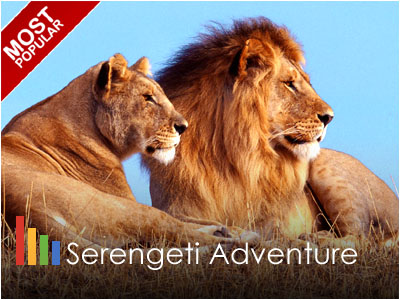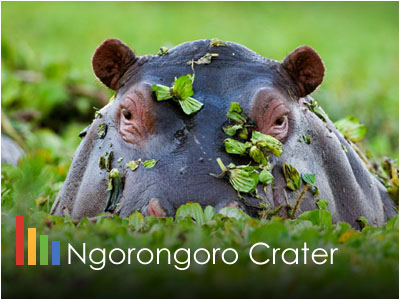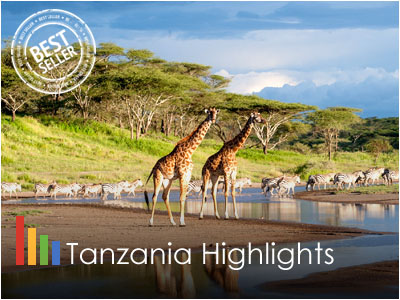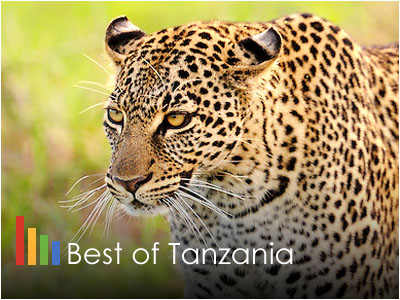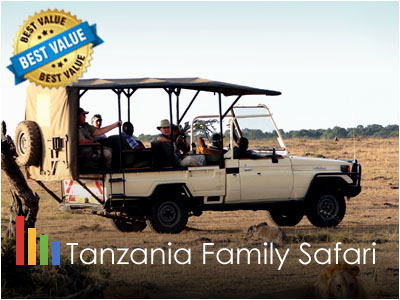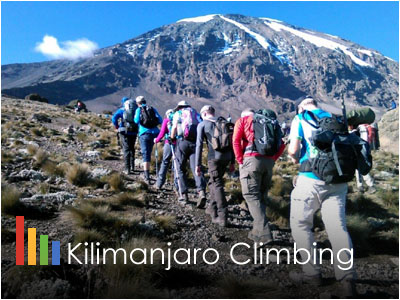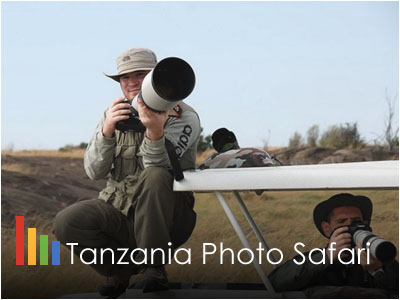Ruaha National Park, Tanzania, Africa
Ruaha National Park - Tanzania, Africa
Ruaha National Park is one of Tanzania's best kept secrets! It's previous inaccessibility means that this park has remained unchanged for centuries and offers the type of wild safari that early explorers were privy to. Ruaha is a visually stunning park with an undulating plateau about 900m with occasional rocky outcrops and mountains reaching heights of 1900m. Running though the park are “sand rivers” which dry up completely in the dry season and act as roads for the game to move from waterhole to waterhole. Ruaha National Park covers an area of about 6,400 miles² (10.300 km²) in the central/southern highlands of Tanzania. It is the country's second biggest park, gazetted in 1964 and is a one and a half-hour flight from Dar es Salaam or a 10-hour drive.
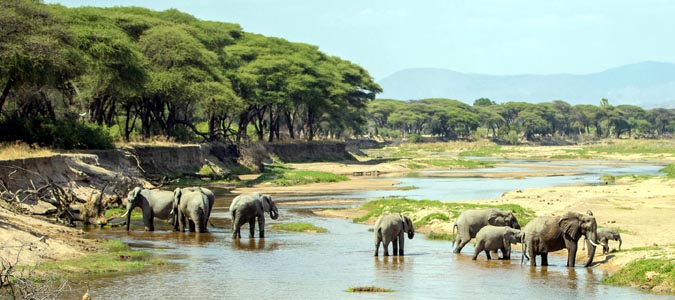
Basic Facts - Ruaha National Park
Ruaha National Park is the largest national park in Tanzania. It covers an area of about 13,000 square kilometres. It is located in the middle of Tanzania about 130 kilometres from Iringa. The park is part of a more extensive ecosystem, which includes Rungwa Game Reserve, Usangu Game Reserve, and several other protected areas. The name of the park is derived from the Great Ruaha River, which flows along its South-Eastern margin and is the focus for game-viewing. The park can be reached by car via Iringa and there is an airstrip at Msembe, park headquarters. Ruaha's relative inaccessibility means it gets far fewer tourists than the Selous and less than any comparable park in the Northern circuit. The rewards of travelling this far are a wild landscape with baobab studded hills and rocky escarpments, with superb wildlife; Ruaha safaris have reliably exciting predator concentrations, it is home to 10% of the world's lion population, contains one of four cheetah populations in East Africa and has the third largest wild dog population in the world. This is accompanied by huge elephant and buffalo herds and a cross-over of game from southern and Eastern Africa.
More About Ruaha National Park
The park history dates back to 1910 when it was gazetted Saba Game Reserve by the Germany then the name was changed by British to Rungwa Game reseve in 1946. In 1964 the southern portion of the Game was gazetted as Ruaha national park and in 1974 a small section of South Eastern part of the Great Ruaha River was incorporated into the park. The name “Ruaha” originates from the Hehe word “Ruvaha”, which means “river”. Ruaha National Park is part of Rungwa-Kizigo –Muhesi ecosystem which covers more than 45000km2. In 2008 Usangu game Reserve and other important wetlands in Usangu basin have been annexed into the park, making it the largest park in Tanzania and East Africa with an area of about 20226km2. Ruaha National Park has a high diversity of plants and animals including elephants, buffalos, antelopes and some of rare and endangered species like wild dogs. The park serves as water shade both for wildlife and human being. This makes it to be economically significant as it supports agricultural activities down stream and contributes to hydro- electric power (HEP) for the country at Mtera and Kidatu dams.
Ruaha National Park has a bimodal pattern of rain forest; the short rainfall season begins November to February, while the long season is between March and April. The park experiences its dry season between June and October. The park is one of the Tanzania birds’ paradise with more than 571species and some of them are known to be migrants from within and outside Africa. Ruaha is believed to have high concentration of elephants than any National Park in East Africa. It is also a place where, magnificent mammals like Kudu, Sable and Roan antelopes can easily be spotted in Miombo woodland. The park is also a habitat for endangered wild dogs.
Other animals in the park include lions, leopards, cheetah, giraffes, zebras, elands, impala, bat eared foxes and Jackals. Apart from large animals, the park also harbors a number of reptiles and amphibians such as crocodiles, poisonous and non-poisonous snakes, monitor lizards, agama lizards and frogs. The park is characterized by semi-arid type of vegetation, baobab trees, Acacia and other species. There are over 1,650 plant species that have been identified. For more information regarding tours and safaris to Ruaha National Park, please DO NOT hesitate to Contact Us.
The park contains the most pachyderms per km sq. in Tanzania. As visitors enter the gate, they pass into the lush forest, home to troops of baboons and blue monkeys. Buffalo and hippo lurch in the adjacent Hippo Pool. The vegetation eventually merges into flat topped acacia woodland where, in the heat of the day entire prides of lion can be seen stretched on the branches of these trees - a habit prevalent to Manyara lions. Along with these amazing tree-climbing lions there are the usual browsers and grazers as well as the curios-looking banded mongoose. Two thirds of the park is dominated by the slightly alkaline lake which is home to a huge variety of waterbirds. More than 400 species of bird including flamingo, pelican, red billed quelea, storks, sacred ibis, cormorants and Egyptian geese can be sighted in this area. Other species of birds include the African spoonbill, lesser flamingo, white pelican and white faced duck.
The best time to visit is between July and November when the animals congregate around the water holes, but the park is stunning all year round. Their cover is blown during the dry season (May to December), when the foliage dies down and animals become easier to see. Twice a year in March/April and October/November, Eurasian migrating birds arrive to boost the already high numbers of exotic and colorful species in this park. We recommend spending a minimum of three days at Ruaha. Ruaha National Park is a good place for seeing Lion, Buffalo, Elephant and Painted Dog (African Wild Dog). Grants gazelle, ostrich and cheetah may be seen on the plains. Ruaha National Park has recently been combined with the Usanga Game Reserve making the largest National Park in Africa covering over 15,000 sq km. This new park itself is at the heart of a much larger ecosystem covering over 40,000 sq km. The highlights of a trip to Ruaha is watching the huge elephant herds (the greatest concentration in Africa) gathered around the mighty Ruaha River; the lifeblood of the park.Like the Selous, Ruaha is a classic dry season park. Game gets progressively better towards the end of the dry season as the water holes and rivers dry up and the game concentrates around water. Like the Selous, travelling to Ruaha out of season will virtually guarantee that you see no other people whilst on safari and there are pockets in the park where the game concentrations are good at any time of the year. The birding from December through to March is exceptional.
By Air-There are both scheduled and chartered flights into the park mainly from Arusha, Dodoma, Kigoma and Dar-es-salaam. Park’s airstrips are located at Msembe and Jongomero. By road-It is about 130km drive from Iringa town and 625km from Dar-es-salaam city. The road into the park is passable throughout the year. There is a wide selection of accommodation in or near the park. The only lodge inside the park is the Ruaha River Lodge. There are also permanent or seasonal tented camps inside the park. There are also several park-operated public and special campsites, a hostel, self-catering bandas, and cottages. Just outside the park boundaries are several accommodation facilities.
Ruaha national park is one of the few Tanzania’s famous wilderness area where one can have a rare experience of game viewing spiced up by the fascinating landscape. The park is rich of plants and animals such as Greater Kudu (Tragelaphus strepsiceros) which can not be found in any other national park. The park boasts of her almost untouched and unexplored ecosystem, making visitors’ safari experience very unique
AfriChoice operates a wide range of carefully designed tours and safaris to Ruaha National Park by providing transport and booking a hotel for you. Our safari consultants will always be at your assistance should you need a tailor-made holiday to this unique destination. NB: For more information regarding Ruaha National Park, DO NOT hesitate to Contact Us.
Contact Us for more information:
Tanzania Popular Wildlife Safaris
-
Serengeti Safari Adventure
Serengeti 3 Days Safari
-
Ngorongoro Crater Tour
Ngorongoro Crater Safari
-
Tanzania Highlights Safari
Tanzania Wildlife Safari
-
Best of Tanzania Safari
Best of Tanzania Safari
-
Tanzania Family Safari
Tanzania Family Safari
-
Mt. Kilimanjaro Climb
Mount Kilimanjaro Tanzania
-
Tanzania Photo Safari
Tanzania Wildlife Photo Safari
-
Tanzania Safari & Zanzibar
Tanzania Safari & Zanzibar Beach



 Paul Kitching - UK
Paul Kitching - UK Karen Howard - CANADA
Karen Howard - CANADA


